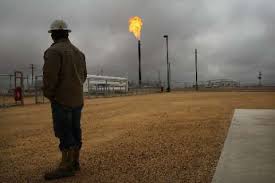
A new report indicates natural gas flaring and venting in the Permian Basin hit an all-time high in the first quarter of 2019 and the lack of pipelines is the reason.
The report by Rystad Energy showed producers burned or vented 661 million cubic feet a day in the Permian Basin that includes West Texas and eastern New Mexico.
“This widespread waste of a valuable commodity is the result of persistent infrastructure challenges, a lack of sufficient takeaway capacity and an unexpected outage on a key pipeline in the area,” stated the report.
Artem Abramov, Head of Shale Research at Rystad Energy doesn’t expect any letup soon.
“We anticipate that basin-wide flaring will stay above 650 MMcfd before the Gulf Coast Express pipeline comes online in the second half of 2019.”
To put these volumes into perspective, the most productive gas facility in the US Gulf of Mexico – Shell’s Mars-Ursa complex – currently produces about 260 to 270 MMcfd of gross gas, which is only some 40% of the amount of gas flared and vented every day in the Permian.
The Permian’s first-quarter flaring and venting level more than doubles the production of the U.S. Gulf of Mexico’s most productive gas facility, Royal Dutch Shell’s Mars-Ursa complex, which produces about 260 to 270 mcfd of gas.
A lack of pipelines and pipeline outages drove the first quarter numbers to a new record.
“It’s very persistent issue with infrastructure,” said Artem Abramov, head of shale research at Rystad.
Natural gas that emerges alongside crude oil is often treated as a byproduct of oil drilling. Crude oil can move by pipe, train or truck, but natural gas can only move by pipeline, and construction has Permian has not kept up with output.
The Permian is expected to flare more than 650 mcfd until the second half of the year when the Gulf Coast Express pipeline comes online, Abramov said. The Gulf Coast Express is designed to transport up to 2 billion cubic feet of natural gas and is scheduled begin operations in October.
“It will be a temporary solution,” said Abramov. “We don’t have any other major project coming online until late in 2020.”
The Bakken shale field in North Dakota also continued to flare a high level in the first quarter, around 500 mcfd, according to Rystad.
Together, the two oil fields on a yearly basis are burning and venting more than the gas demand in countries that include Hungary, Israel, Azerbaijan, Colombia and Romania, according to the report.






